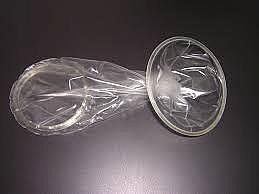Female Condoms: Persons Living with HIV Speak Out in Uganda

The female condom may not have been as popular as the male condom. The latter has for long been used as a contraceptive and a tool for prevention against HIV infection. There are various reasons which persons living with HIV (PLHIV) attribute to this slow response, as noted below.
Not aware of female condoms
Kasenene Tom from Bagundese in Nakaseke has observed that, “As the Uganda government and private organizations in Uganda seek ways of re-introducing the female condom and their uses by women, Persons Living with HIV in Nakaseke district have observed that women do not want to use the female condoms and many of them have not even seen them.”
“After the government of Uganda withdrew the female condom from the market and later re-introduced it, many of us have noted that the female condom is still not well received by the female community in our district.”
Why female condoms are rarely used
Hassan Mutebi the PHA focal coordinator for Nakseseke noted that there are three major reasons why the female condoms are shunned by the women in the district of Nakaseke:
“Firstly, because of the nature of the female condom, it is considered big compared to the male condom. Women say they cannot keep carrying it whenever they go because they may be construed to always being ready for sex any time.
Secondly, people talk about the two rings it has. The fact that during sex, one ring of the condom has to be inside the vagina, while the other ring stays inside make some women wonder how the ring will settle in the vagina.
The third reason given in Nakaseke was the cultural reason, especially among the Baganda tribe. Culturally, the Baganda tribe which is the dominant tribe in central Uganda practices a culture of „pulling‟ (Elongation of the labia of the vagina), the women say that the ring blocks the clitoris and makes sexual intercourse to become messy.” But Hassan adds that despite the problems, they are continuously teaching women about the female condom.
“Some women say that, they were told that the female condoms can stay in the vagina for a longer time than the male condom which is only inserted after erections. They say that much it can stay longer; it is not easy to ascertain that when it is on, the man will come for sex.”
A village counsellor Mubiru in Kikamulo notes that, “I have been distributing condoms for a long time and following sex issues but I realize that women are always forced into sex. And with the fact that men in our communities still hold a lot of authority, female condoms are needed. I have not come across the female condoms yet I think that they would help women whose husbands do not always use any protective methods”
Recognition of female condoms
According to UNFPA (2013) State of the World population, contraceptives, including male and female condoms, can help prevent pregnancy and sexually transmitted infections and eliminate many of the associated health risks. Yet adolescents‟ unmet need for contraceptives, information and services remains great, despite international commitments to remove barriers to family planning. In 2011 alone, UNFPA procured 3.5 million female condoms through its Global Programme to Enhance Reproductive Health Commodity Security.
According to a document produced by PATH, UNFPA. Female Condom: A Powerful Tool For Protection, (2006), it notes that
“Although female condoms have been introduced in many countries, their supply and uptake in countries hardest hit by the HIV/AIDS epidemic is woefully inadequate. In 2005, only 14 million female condoms were available for distribution, while 6 to 9 billion male condoms were provided worldwide. Greater investment by the private and public sectors and support from the donor community are urgently needed to make the female condom an affordable option”.
It further adds that, “While new female condom products being developed offer more choice and may overcome some of the problems reported by current users, these products face financial and regulatory barriers that slow their path to market. Advocacy for the female condom, from the community level upwards, is needed to stimulate demand and increase access and availability. Research that provides more data on the method’s impact and cost-effectiveness will help promote the female condom.”
